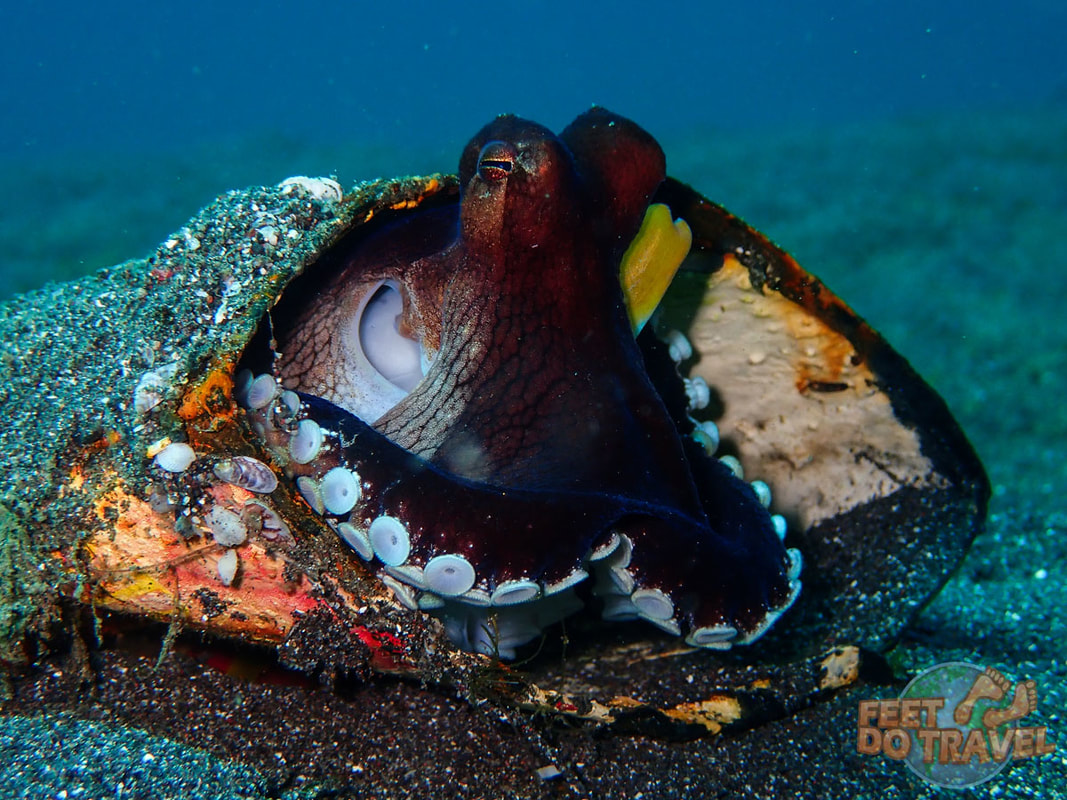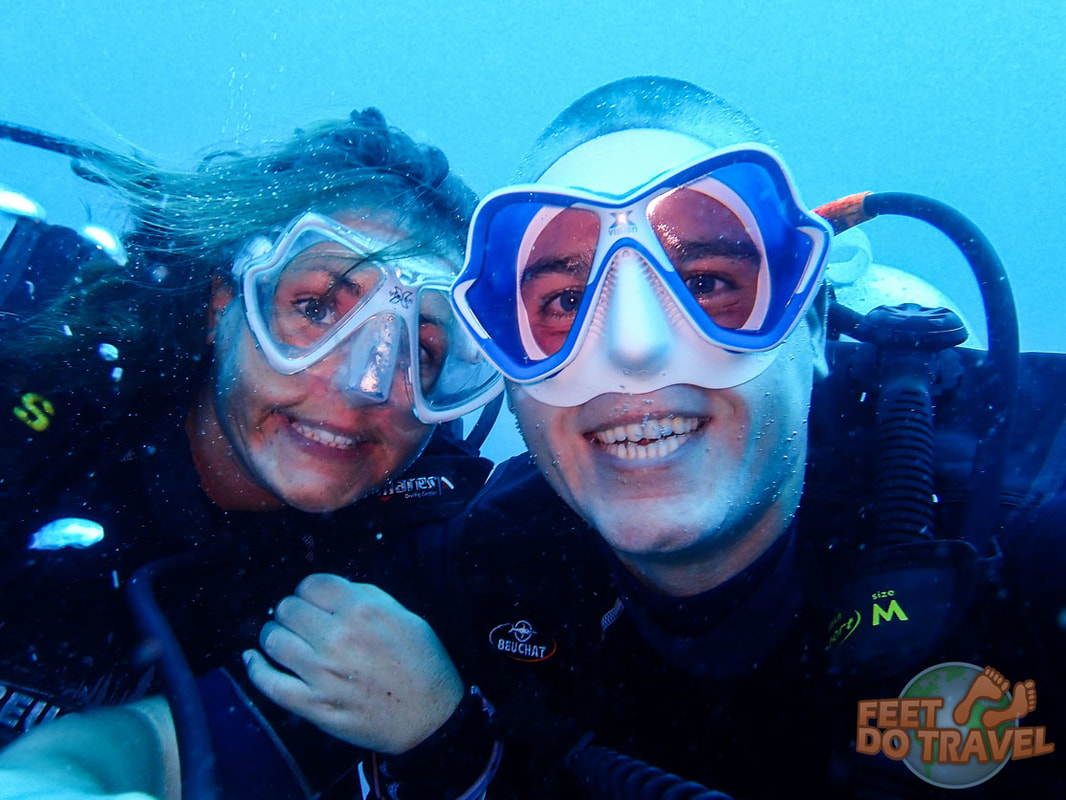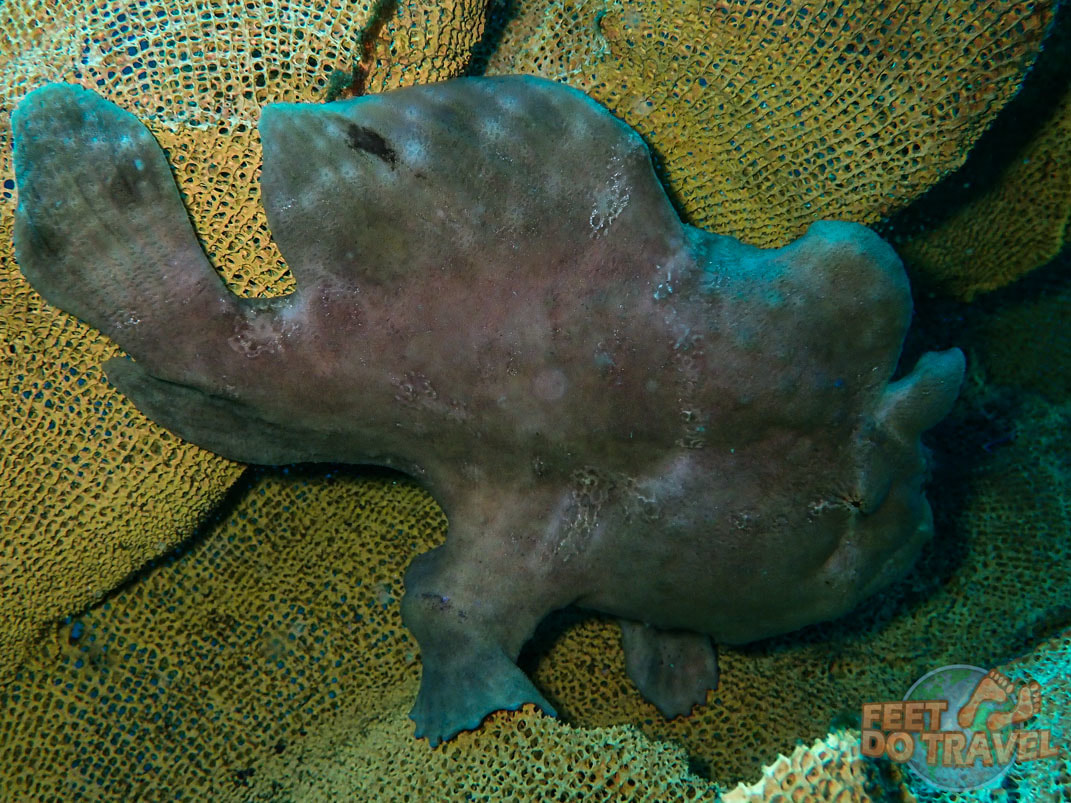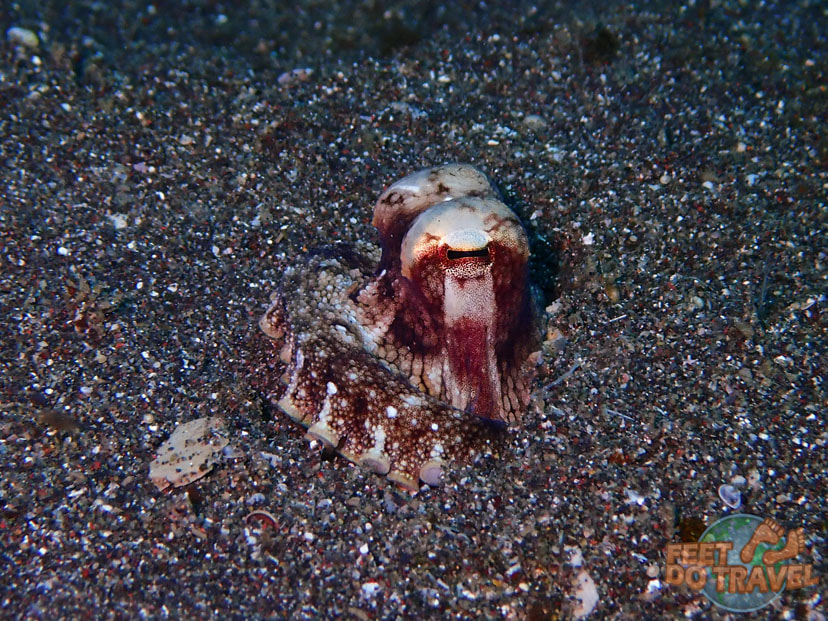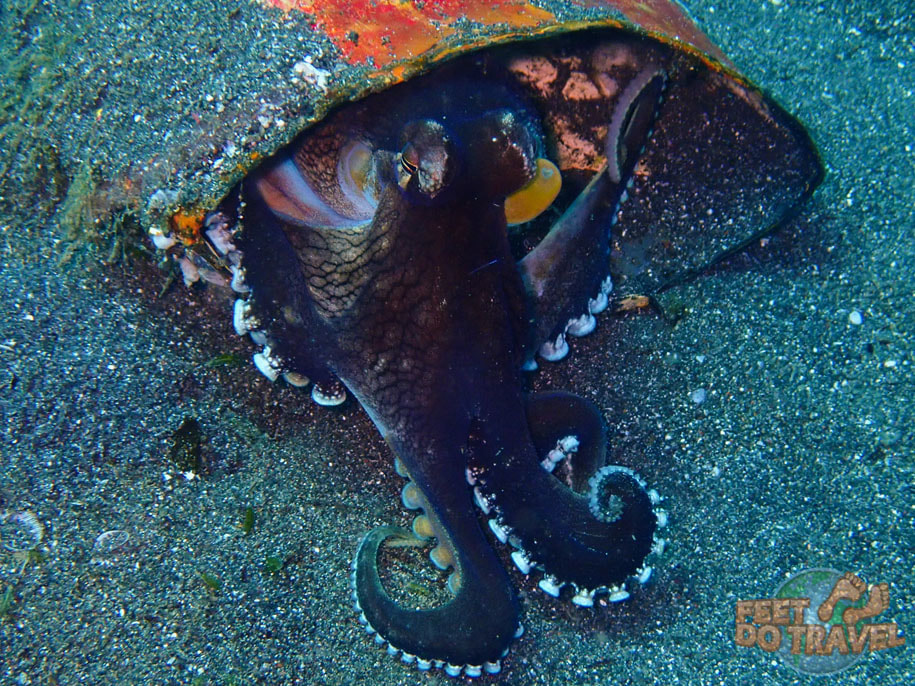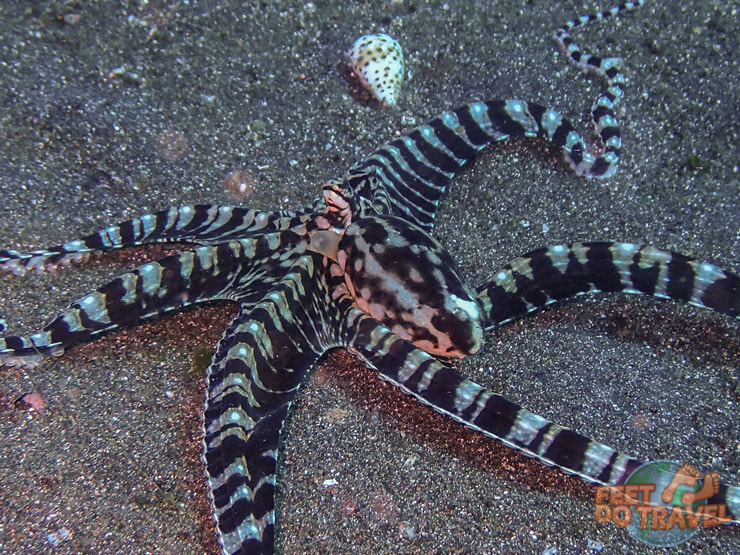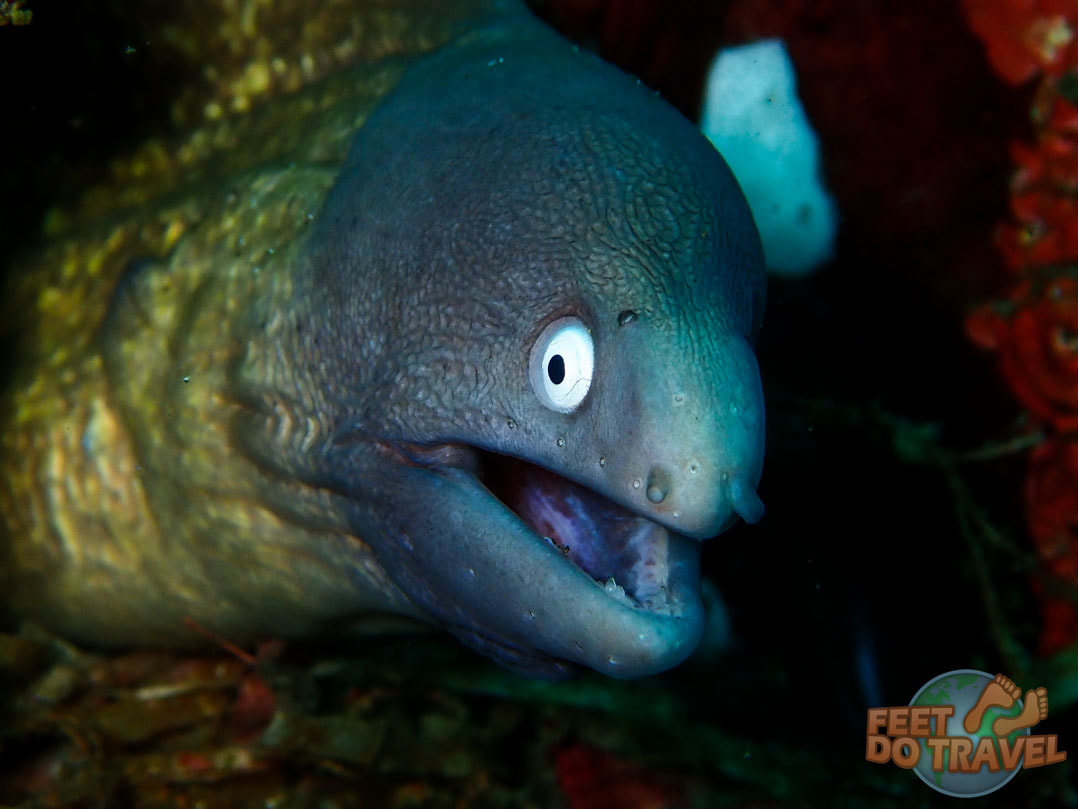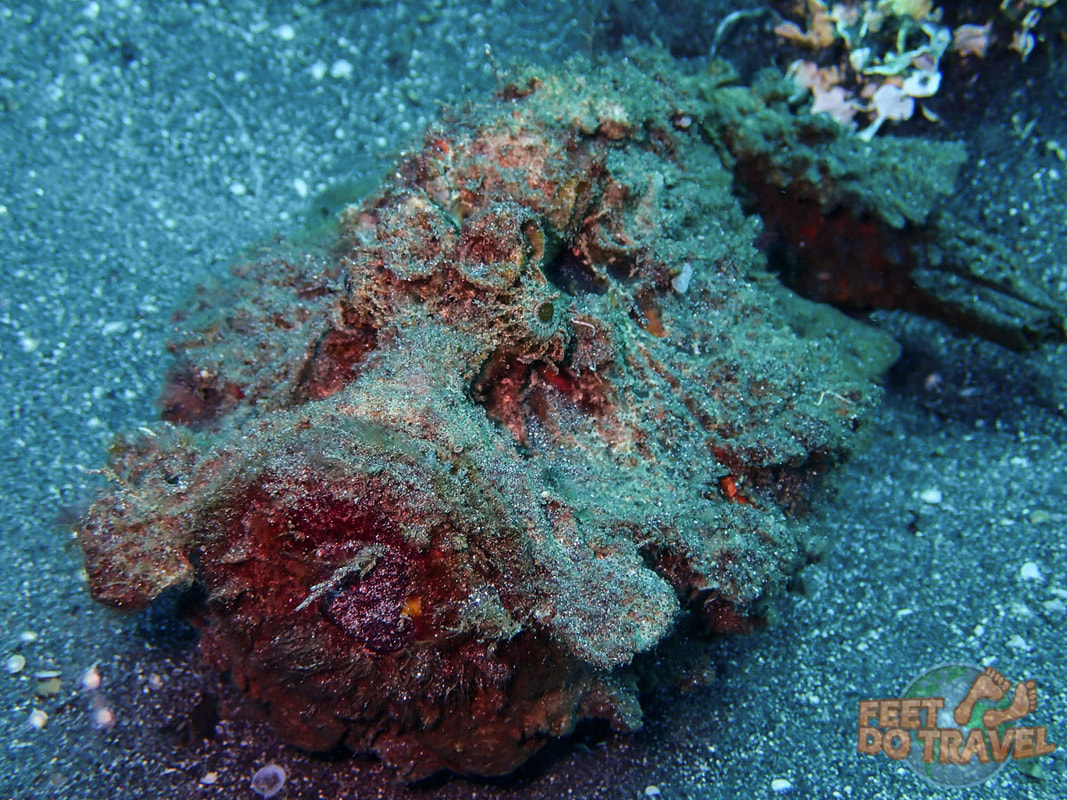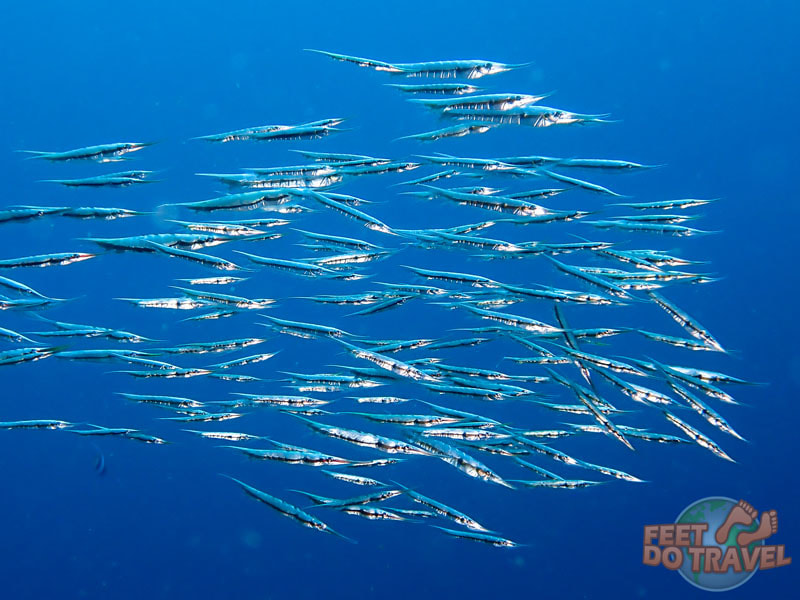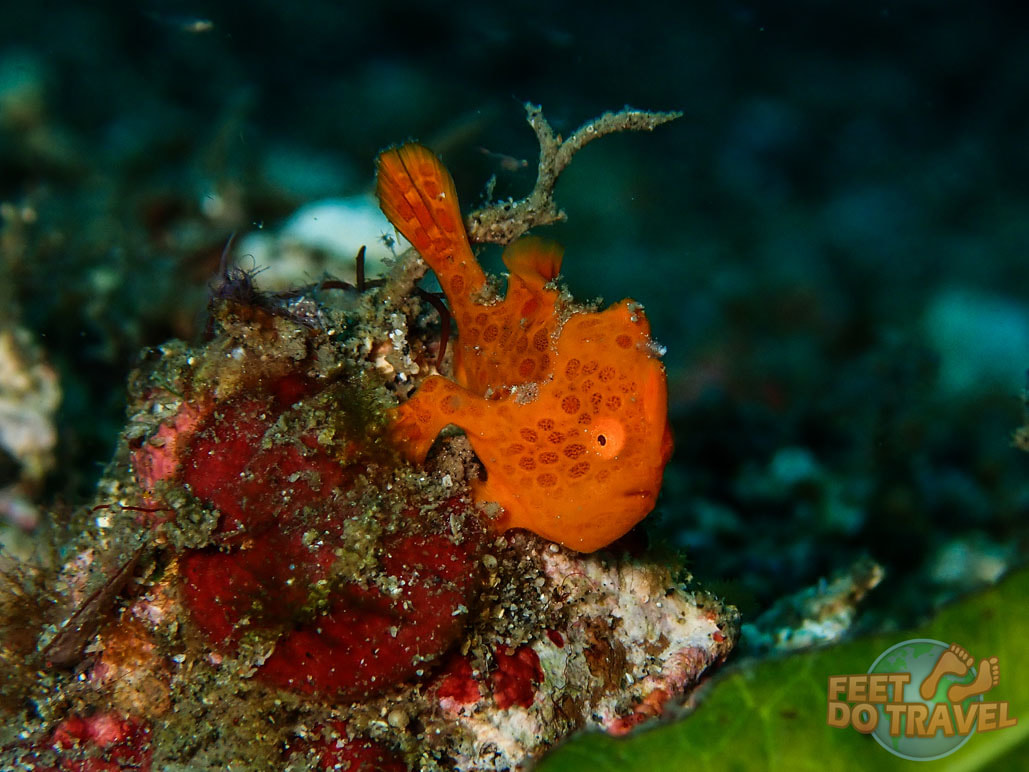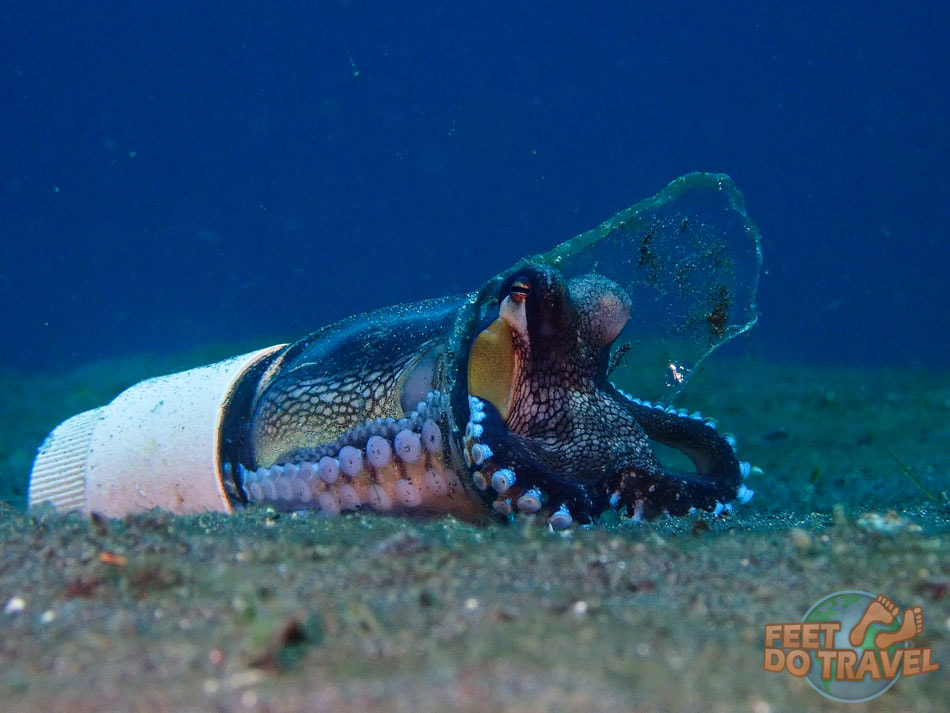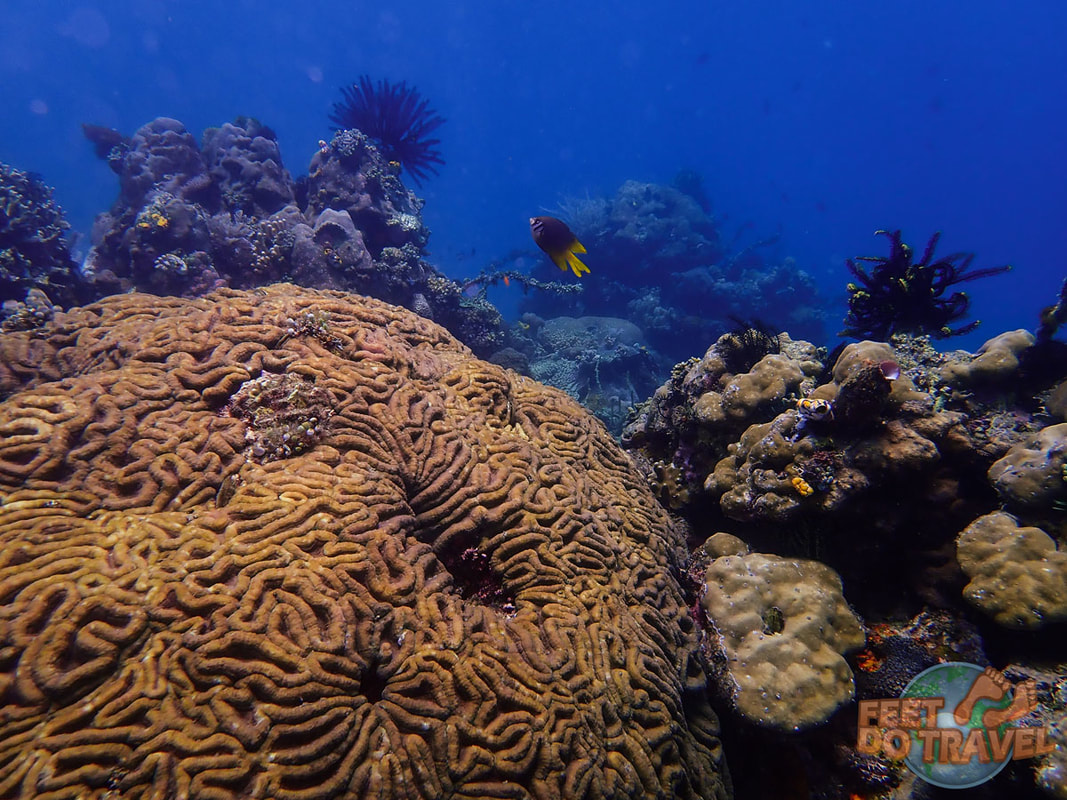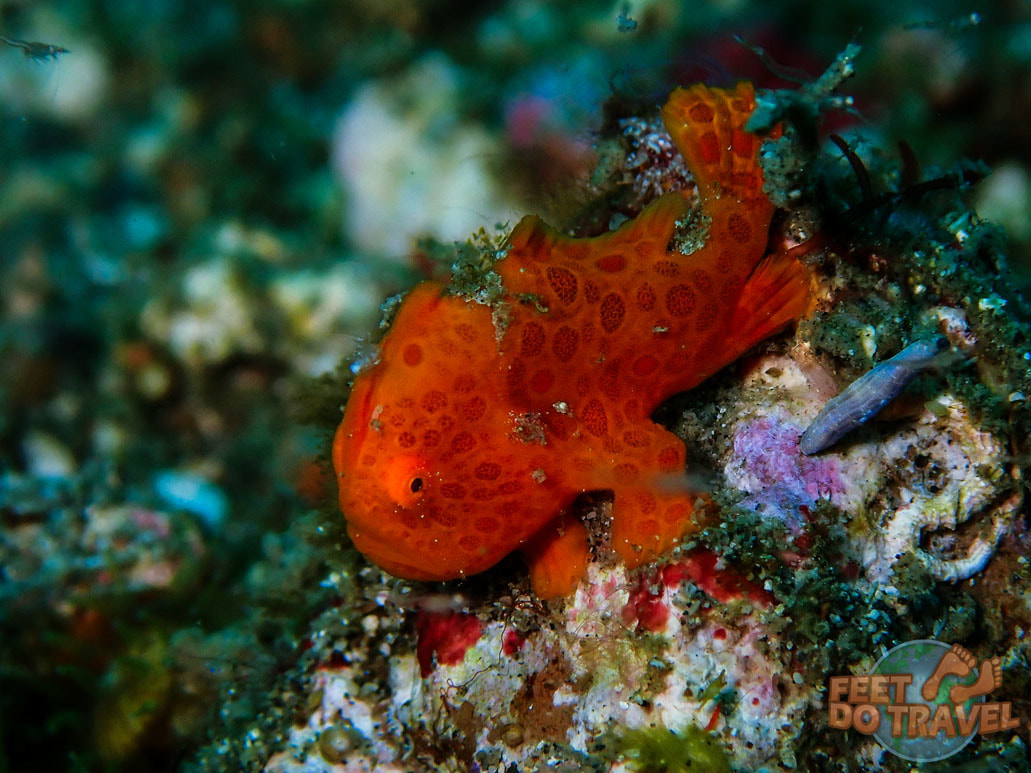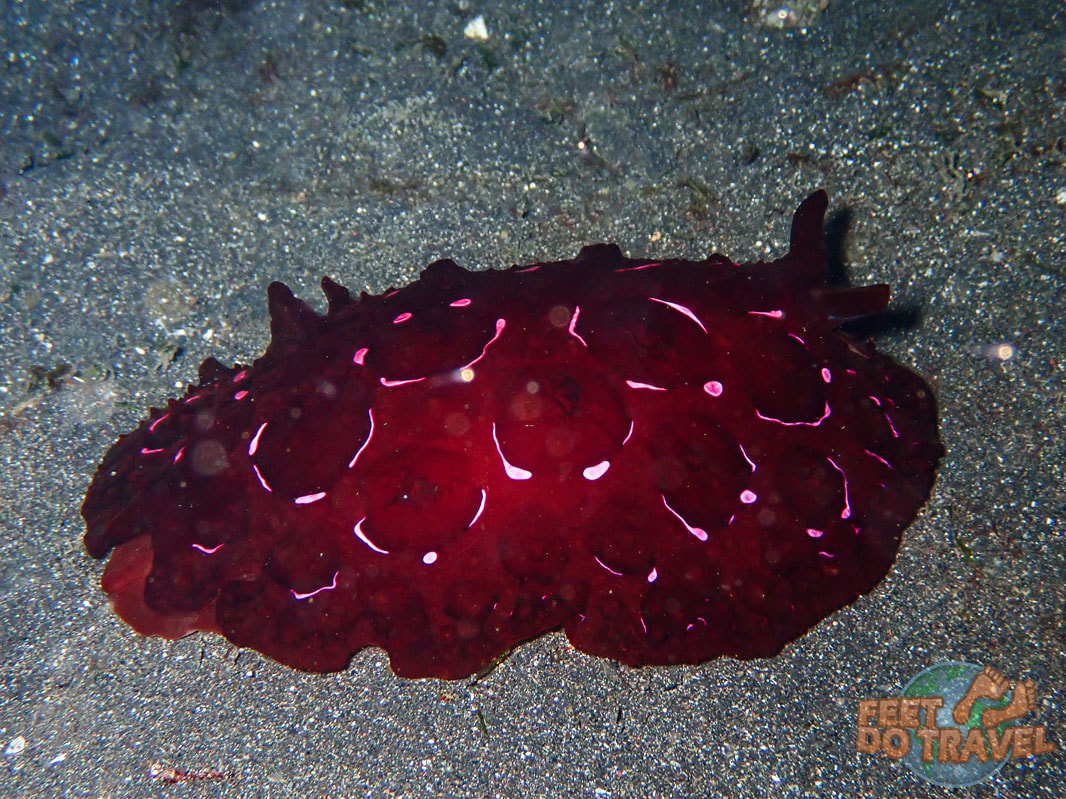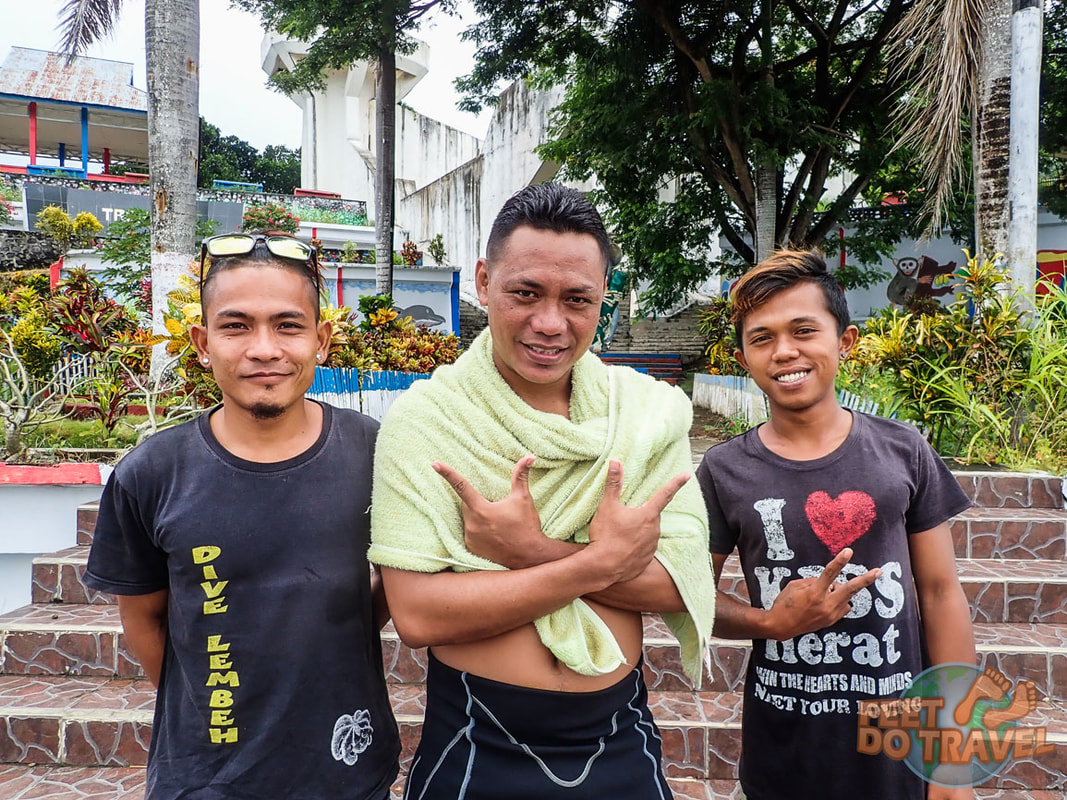
I’m torn between the jungle being my happy place, and the beach, I couldn’t believe my luck when I found both!
Lembeh is macro diving heaven for any discerning scuba diver, and is considered by many to be the best muck diving place in the world.
Lembeh, Suluwesi should be on your scuba diving bucket list if you love weird and wonderful critters.
Scuba diving in Lembeh, however, is a whole different experience. It’s unlike any other diving we have done. But why? What is it about Lembeh that draws people here? Is it because the black volcanic sand creates mesmerising images?
Let our photographs help you decide.
On 28 September, a 7.5 magnitude earthquake caused a tsunami, and subsequent mudslides. The death toll is already in the thousands, and rescuers are doing all they can to pull out any survivors trapped underneath collapsed buildings.
Although Lembeh wasn't directly affected by these tragic events, parts of Sulawesi have been completely destroyed. Indonesian people are warm, caring, and now they need your help. Please, if you can donate just the cost of a cup of coffee, you will have done something good today. Action Aid Link.
 The boat journey from Bitung to Lembeh Island across the Lembeh Strait
The boat journey from Bitung to Lembeh Island across the Lembeh Strait
Lembeh is a small island off the north east coast of Sulawesi, Indonesia, situated within the coral triangle. The island is 25km long and 2km wide, separated from the mainland and its nearest town of Bitung by a narrow stretch of water known as the Lembeh Strait.
Lembeh is conserved the muck diving capital of the world. Muck diving gets its name because of the sediment which lies beneath most dives, which is usually a “mucky” environment. A standard muck dive can also include all manner of man- made trash such as old tyres, paint cans, glass bottles etc, which critters use to make their new home.
Yes, it evokes bitter-sweet emotions seeing trash at the bottom of the ocean during a dive, however this environment is the home of rare marine life. The microscopic creatures, the underwater aliens, the unicorns of the ocean all live here.
That is what makes Lembeh special.
The island of Sulawesi is known as the “Land of the Smiling People”, and is a largely undiscovered tourist spot. We found the people to be very warm and friendly, we wished we had more time to spend in this green and unspoiled area.
We chose to dive and stay with Daniels Lagoon Dive Resort, a small but very personal dive centre 30 minutes’ boat ride from the mainland.
As we approached the resort, managers Natasha and Naldi were waiting to greet us with a smile. It became clear very quickly when speaking with them that diver safety, customer service, and client’s happiness are of paramount importance. I won’t lie, we are always concerned when choose a dive centre we haven’t used before, especially after our disastrous first day diving Raja Ampat which has now made us rather wary. Thankfully, Daniels Lagoon Dive Resort put our minds at ease immediately. For a more detailed review of the dive centre, please see the end of this blog post.
Referred to as the “Macro Magician” by Aaron "Bertie" from Scuba Zoo, Fadly would point out the tiniest of shrimps and, whilst we were taking photos, he would be looking for the next unusual critter. Our second dive guide Aso was a Lembeh expert, and understood marine life behaviour. This helped find creatures hiding, or buried in the sand, we called him “The Octopus King”.
Diving in Lembeh is like nothing we have done before. In order to manage your expectation, and give you the best experience, I would just like to share a couple of things with you.
Stats:
- Visibility is around 5-15 metres, but as you are not looking into the blue, this is perfectly fine.
- Water temperature: A year round dive destination. July – September are cooler (25°c – 27°c). Rain season December – March is warmer at 29°. Some say the cooler temperatures is when the most critters come out but who knows? Octopus season is September/October
- Skill level: All – but excellent buoyancy is required. You don’t have to be an experienced diver, you just need to control your buoyancy in sandy terrain. There is nothing worse than looking at a 2mm seahorse or critter, only for someone to fin a cloud of sand into the air, and the little critter becomes invisible. It helps if you have your OW Deep Adventure or Advanced certification, because this increases your chances of finding cool critters hiding deeper than 18m.
- Lembeh is not the place to look for “the big stuff” or an abundance of fish. Lembeh is famous for its macro – the “small” stuff. It’s also known for the rare and unusual creatures that live here.
- Patience is required. You can see nothing for 30 minutes and then boom, something special will materialise.
- You have to search for your treasure. Dive sites are large, the weird and wonderful are small and camouflaged.
- You don’t have to go very deep to see amazing marine life. You can see rare critters anywhere between 4 – 25 metres.
- It’s not the place for coral lovers, there is some to be found but you don’t come to Lembeh for coral. Nearly all dive sites have a sandy or rocky/weedy bottom.
- Lembeh is a photographer’s paradise. The kaleidoscope of critters’ colours come alive through the lens.
- There is little to no current, so nearly all dives are cruisy and relaxed.
- Lembeh has a rule of no more than 15 divers per site. As there are 66 dive sites to choose from around an island only 25km long and 2km wide, it’s easy to simply move to another site. You won’t have a crowded diving experience, and can take your time.
- Night dives are very special, try and do as many as you can.
- Bunaken in south Sulawesi is becoming more popular, and you can easily arrange a twin-centre dive trip between the two.
In this post you will see the weird, ugly, beautiful and downright amazing. For each dive site we have chosen our “star of the show”, and written a few facts about it in our “Creature Feature”.
Enough talking, let me show you the incredible underwater world that Lembeh has to offer.
All photographs taken with an Olympus TG5 with Olympus PT-058 Underwater Housing.
Named after dive guides and boat crew from a nearby dive centre, who found this site when exploring (Ronald, Opo, Joni, Ona and Salmon).
Octopus are nearly always on people’s wish lists, and there were on ours. Alas the Blue-Ringed Octopus and Wunderpus evaded us, but we did see Coconut Octopus and a Mimic Octopus. It was an absolute privilege to see a Mimic swimming, then settling in the sand.
Octopus in general are known to be masters of disguise, but the Mimic Octopus’ camouflage takes it to the next level. It can imitate as many as fifteen animals. They have irregular white and brown stripes, spots, can change colour, shape, behaviour and texture, which all help them blend into surroundings and trick predators.
Flatfish: by pulling its arms together and floating parallel
Lion fish: spreads out its tentacles to resemble the lion fish spikes
Sea snake: waving two of its arms, it mimics a Banded Sea Crait
Octopus Fun Facts
- An octopus can squeeze into any hole that is the same size as its beak, even if the rest of its body is bigger. It will squish its head and brain to fit.
- Octopuses have three hearts; one pumps blood around the body, the other two pump blood to the gills.
- Octopuses blood is of a bluish appearance as it contains a copper-rich protein, but only appears this colour when oxygenated, when it gets back to the heart it is clear.
- Each Octopus arm has as many as 200 suckers, each one is both touch and chemo sensitive. With this much data to take in, the Octopus distributes the processing via a brain at the base of each arm.
- Yes an Octopus has nine brains. One main brain which functions as the analysis and decision maker. The remaining eight are at the base of each arm.
Dive site: Aer Bajo 1
Aer Bajo means Sea Gypsy
This is one of Lembeh’s top crustaceans but are not very common. When Bertie from Scuba Zoo dived with Fadly, he was overjoyed when one was pointed out to him. Watch the episode of “Indonesia Below”, to see his reaction yourself, a good guide is the key to finding them. They grow to a maximum of 2cm, but are often smaller so quite difficult to spot.
Not exactly an attractive looking fish, but not all that is beautiful is pretty. They are 6-12cm long, have a shaggy appearance, and their red/brown/green colour varies to match their environment. The spikes on their back are venomous, are raised when threatened, and apparently can cause death.
An Ambon Scorpionfish’s eyebrows are the most impressive, rivalling any mono-brow you may have seen on a human! Those bad boys are large, fluffy, and look more like antennae than eyebrows.
Dive site: Pantai Perigi
The rough translation of thisdive site is to “search the beach”, as its located off a beach. This site had a few areas of healthy, thriving coral.
I love the ugliness of a frogfish. The colouring on their body varies depending on their living environment, and they have the capacity to change colour and pigment pattern in a few weeks. Their skin is covered with small wart-like blotches, and they swim using jet propulsion from backward facing, tube-like gill openings. For protection against predators, the Juvenile Painted Frogfish mimic poisonous nudibranch.
Dive site: Kareko Batu
Just like a chameleon, Dragon Sea Moths are a master of camouflage, able to change its earthy colour to blend into its surroundings. They are difficult to find as they are small and resemble the sand, coral, graval or muddy bottom where they live. They can also shed their skin in a single piece, just like a snake. Found on their own or in pairs, we saw two together. They also “walk” with their pelvic fins.
Dive Site: Trikora
The true definition of “muck diving”, this dive site is a dirty one. Near the harbour and a jetty on the mainland, trash litters the floor – but it’s a good place for things to hide.
We were incredibly lucky to see Mandarinfish during the day. They are reclusive by nature, and known for their nocturnal behaviour. Sometimes described as “the most colourful fish in the world”, Mandarin fish are small, very pretty with vivid bright colours. The mandarinfish gets its name from the extreme colours that resemble the robes of an Imperial Chinese officer – the Mandarin.
They are not easy to find, but our expert guide Aso found three; inside a large coral “cave”, and another was using a spiny urchin as protection. Its considered a privilege to see one (let alone three). If you find them on a sunset/night dive, their mating ritual is particularly beautiful as they dance around one another.
This shrimp is named because it has a long rostrum, or a nose like a duck beak. A rostrum is an extension of the body, bottlenose dolphins also have them. Donald Duck shrimp are around 2cm in size, and are not seen very often, therefore when you do, it’s a rare, prized find.
Night Dive Site: Aer Prang 1
Aer means Water, Prang means War. This dive site is named after the jetty which provided fresh water during WWII from an uphill aquifier.
Nudibranch are a slow moving brightly coloured sea slug, of which there are over 3,000 different types. Being a slow moving creature, it’s hard to find a mate on the reef so each animal can reproduce asexually. They lay their eggs on flat ribbons arranged in a rose shape attached to rocks. If you look closely at the centre of this picture, you can just see the deep red coloured ribbon being formed. To witness this activity is very special.
Night Dive Site: Sarena
Closely related to the cuttlefish, Bobtail squid are tiny in comparison, about the size of your thumb (two inches). They have bioluminescent bacteria within them, meaning they can control the brightness of their glow, in this photo you can see they are a beautiful blue. Bobtail quid only come out at night so they can hunt.
Other popular Dive Sites:
Dive sites can be seasonal, just because one dive site had a lot of octopuses over a few months, it doesn’t mean they are there all year round. Critters will also move; if one dive site has seen too many divers, marine life will move elsewhere.
Police Pier – Used to be a locals favourite a couple of years ago, but a landslide early 2018 affected this site.
TK1, TK2 & TK3 (Teluk Kembahu) – Named after the local village Kembahu, with “Teluk” meaning bay, this dive site is split into three.
Mawali Wreck – A WWII Japanese Freighter laying on her port side, it’s the most popular wreck dive in the strait.
Critter Hunt – We did dive here, but didn’t see anything that we hadn’t seen elsewhere. As the name suggests, it’s full of little critters such as nudibranch, pipefish, frogfish, shrimp etc.
Nudi Falls – As the name suggests, plenty of Nudibranch can be found here if you haven’t yet had your quota.
This Dive Centre is new in comparison to others in the area, but their team are top notch. The boat crew are always helpful, as are the kitchen, waiting staff and management. We couldn’t fault their attentiveness or customer service, and would highly recommend this place to anyone wishing to dive Lembeh on a budget.
Please do not mistake the word “budget” for lacking in high standards. This resort was taken over as an existing property, and the new owners/management have a lot of exciting plans for the future. I love that they hope to develop the lagoon with a coral garden as planned. Their priority was the dive centre, and ensuring excellent customer service for their guests. They have definitely achieved this. It will be exciting to return to this resort in the future to see their plans come to fruition.
Location: A 2 hour car journey from Manado airport, then 20 minute boat journey from the mainland town of Bitung. Airport transfers arranged. The resort is located in a quiet lagoon surrounded by forest and mountains.
Rooms: Wooden chalets are simply but adequately furnished. The bed is very comfortable with a mosquito net. Fan. Towels provided.
Food: Exceptional and plentiful, we never went hungry. Afternoon snack, 3 course dinner, and fruit is supplied at breakfast and lunch. They pride themselves on presentation and the food is restaurant quality. A mixture of local cuisine with a Western twist. Suitable for vegetarians.
Dive guides: Two dive guides, both experts in their own different way. They provide briefings, listen to your needs, help with any issues above or below the waves (cramp whilst diving etc), amazing at finding marine life, do their best to adhere to “wish list” requests, but more importantly – they do not touch marine life. This is not always the case within Lembeh or Indonesia.
Dive boat: Big, comfortable, spacious, newly painted, fresh water bowl for cameras, with towels, tea/coffee/water/biscuits provided. Tank racks in the middle which not all dive boats have. Our personal opinion is this is important to diver safety and equipment protection, but we know others will disagree. Fresh towels supplied each day for the dive.
Daniels Lagoon Resort website: www.DanielsLagoon.Com
How to get to Lembeh
Flights: You can get a direct flight from Kuala Lumpur (Malaysia), Singapore, Jakarta (Indonesia), Surabaya (Indonesia).
Airport: Manado, Sulawesi, Indonesia.
Transfer: 2 hours by car, 15 – 30 minutes by boat to your resort
Other activities: A day trip to Tangkoko Nature Reserve to see the Tarsiers can be arranged from the resort.
Lembeh, Indonesia Travel Information
- A 30 day visa is given at the time of arrival in Indonesia (not for all countries, check with your embassy).
- The local currency is Indonesian Rupiah £1 GBP = 18,000 IDR
- Their official language is Bahasa Indonesia which is similar to Malaysian and throughout Indonesia in general
- If you can use just a couple of Indonesian words, this will give you big smile in return, even if you simply use “Pagi” (morning) and “Terima Kasih” (thank you), it will be hugely appreciated.
- No ATM at the resort so withdraw cash at the airport. Credit cards are accepted with a 3% charge
- There is no Wi-Fi at the resort, but they do have a hotspot you can use if you need it.
- The religion is Christian.
If you like this post, please Pin & Share it!
Tarsiers and a Monkey Selfie
Raja Ampat on a Budget
Diving Raja Ampat
Komodo Dragon Hike in Rinca
Komodo, Flores, More Than Just Dragons
Jewels of Java - Borobudur & Prambanan
Scuba Diving the Gili Islands
Best Sunset Spots on Gili Air
10 Must Try Indonesian Dishes
Manta Madness
USS Liberty in Bali - Highly Wreck-Ommended
Gili Asahan - The Secret Gili Islands
Gili Gede - The Secret Gili Islands
Gili Sudak and Gili Kedis - The Secret Gili Islands
Indonesian Orangutan Adventure
Derawan & Sangalaki - Borneo's Hidden Gem?
The #FeetDoTravel blog link-up!
We are proud to host the #FeetDoTravel blog Linkup. If you have a blog post you would like to share, feel free to click on the picture below which will take you through to our Facebook Community and drop your link there. The link-up is open from Friday 12.00am (midnight UK time) and will close Sunday 12.00pm (midnight UK time). We are a fun and loyal group who are more than happy to comment, share and reciprocate! Happy Travelling Feet Fans!

